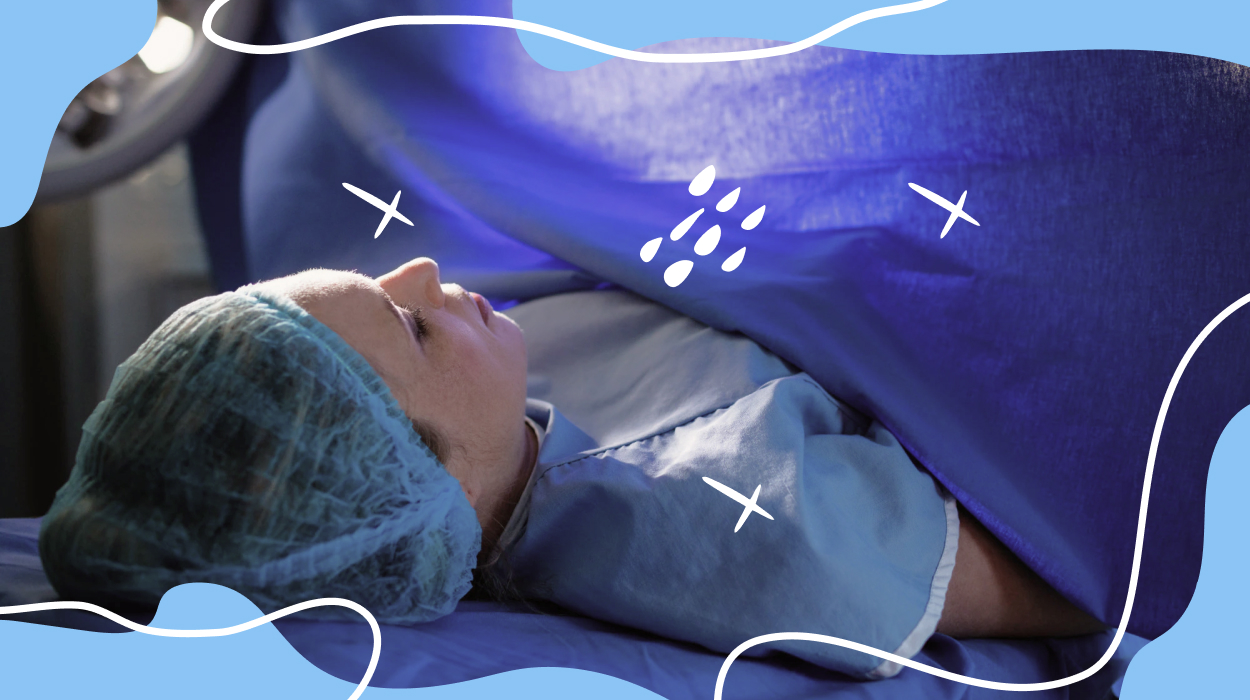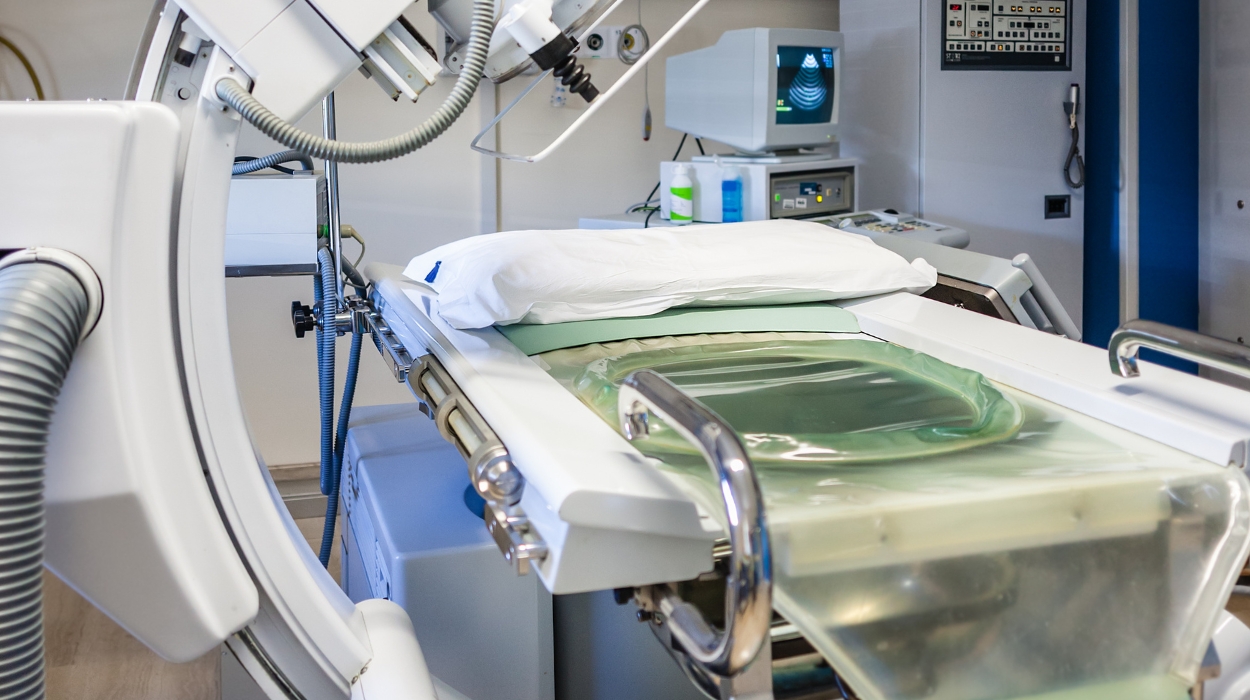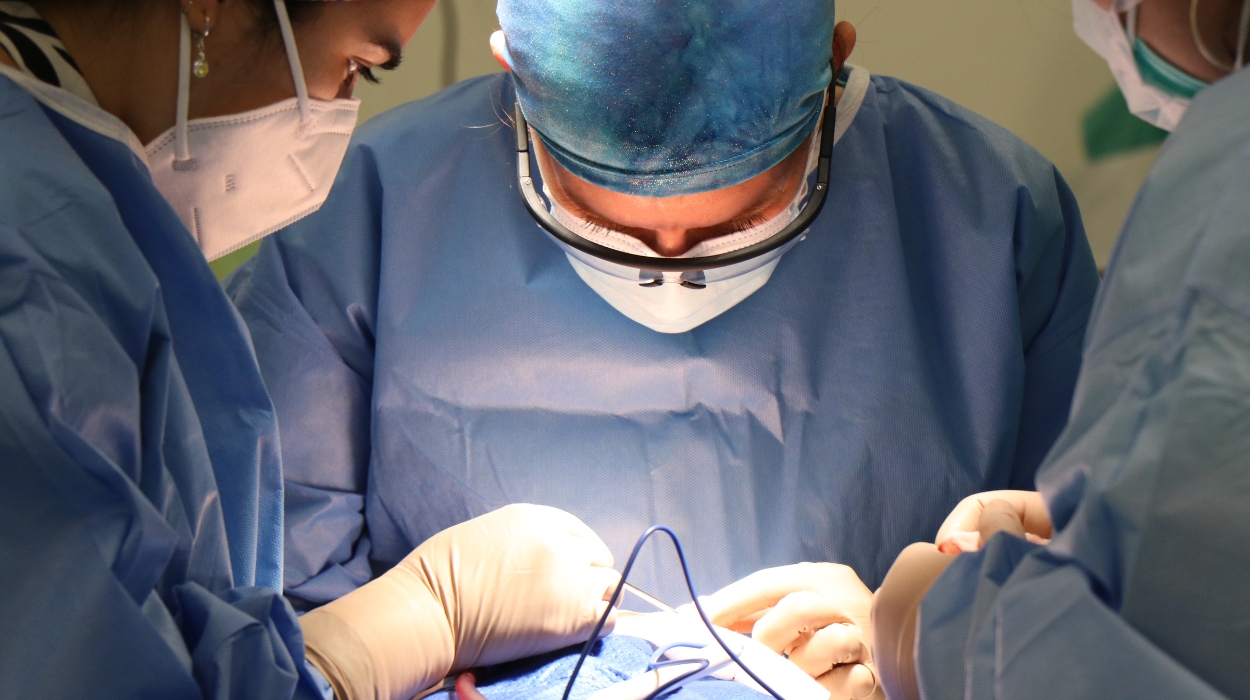 Evidence Based
Evidence Based
Evidence Based
This article is objectively based on relevant scientific literature, written by experienced medical writers, and fact-checked by a team of degreed medical experts.
Our team of registered dietitian nutritionists and licensed medical professionals seek to remain objective and unbiased while preserving the integrity of any scientific debate.
The articles contain evidence-based references from approved scientific sites. The numbers* in parentheses (*1,2,3) will take you to clickable links to our reputable sources.
Kidney Stone Surgery Laser 2024: Treatment & Recovery Guide 2024

Imagine a kidney stone treatment that is minimally invasive, highly effective, and precise. Thanks to the advent of laser surgery, this revolutionary approach is now a reality. Laser technology has transformed the field of kidney stone treatment, particularly in procedures known as ureteroscopy and laser lithotripsy.
With laser surgery, a thin, flexible tube called a ureteroscope equipped with a laser fiber is inserted into the urinary tract to break down kidney stones into smaller fragments. This technique offers numerous advantages, including faster recovery, reduced risk of complications, and the ability to treat even the most challenging stones. Learn about other ways to get rid of kidney stones in this article.
In this article, we delve into the intricacies of laser surgery for kidney stone treatment, exploring its benefits, the procedure itself, post-treatment experiences, and crucial follow-up care. So keep reading for the complete guide on laser kidney stone surgery!
Kidney Stone Surgery Laser: What Is It?
Kidney stone surgery laser, also known as laser lithotripsy,[1] is a cutting-edge procedure used to treat kidney stones. It involves the use of laser technology to break down kidney stones into smaller fragments, making them easier to remove or pass naturally through the urine.
During the surgery, a ureteroscope equipped with a laser fiber is inserted into the urinary tract, allowing the surgeon to visualize and target the stone precisely. The laser energy is then applied to the stone, causing it to fragment. This minimally invasive procedure offers several advantages, including faster recovery, reduced risk of complications, and preservation of surrounding healthy tissues.
How Is Surgery Laser Used In Kidney Stone Treatment?

Laser surgery has revolutionized the treatment of kidney stones, offering a minimally invasive and highly effective approach. In kidney stone treatment, laser technology is commonly used in a procedure called ureteroscopy and laser lithotripsy.
Ureteroscopy involves inserting a thin, flexible tube called a ureteroscope into the urinary tract to reach the kidney or ureter where the stone is located. The ureteroscope is equipped with a laser fiber that emits highly focused and powerful laser energy. Once the stone is visualized, the laser is used to break down the stone into smaller fragments.
The laser energy is delivered in pulses, and as the laser beam makes contact with the stone, it creates a controlled explosion, fragmenting the stone into tiny pieces. The laser energy is precisely directed to target and fragment the stone while minimizing damage to surrounding tissues.
The fragmented stone pieces can then be removed using a small basket or allowed to pass naturally through the urine. In some cases, a stent may be placed temporarily to help facilitate the passage of stone fragments and ensure proper healing.
Laser lithotripsy offers several advantages over traditional surgical methods. Firstly, it is minimally invasive, as it does not require any incisions. Instead, the ureteroscope is inserted through the natural urinary tract opening, eliminating the need for external cuts. This reduces the risk of complications, shortens recovery time, and promotes faster healing.
Secondly, laser lithotripsy is highly effective in breaking down stones of various compositions, including hard and dense stones that may be challenging to treat with other methods. The laser’s precision allows for targeted stone fragmentation, ensuring thorough stone clearance and reducing the likelihood of stone recurrence.
Lastly, the use of laser technology minimizes damage to surrounding healthy tissues, reducing the risk of complications and preserving kidney function.
However, it’s important to note that laser lithotripsy may not be suitable for all types of kidney stones or all patients. The decision to undergo this procedure is made based on factors such as stone size, location, composition, and the patient’s overall health.
What Happens On The Day Of Laser Surgery Treatment?

On the day of laser kidney stone surgery, several important steps occur to ensure a smooth and successful procedure. Here is an overview of the typical process:
Admission
You will be admitted to the hospital or surgical center on the scheduled day of the surgery. The medical staff will guide you through the registration process and provide you with any necessary paperwork.
Preoperative Preparation
Once you are settled in your room, the healthcare team will prepare you for the surgery. This may involve changing into a hospital gown, removing any jewelry or accessories, and inserting an intravenous (IV) line to administer fluids and medications.
Anesthesia
Before the surgery begins, you will be given anesthesia to ensure your comfort and to prevent pain during the procedure. The type of anesthesia used can vary depending on the specific case and the preference of the healthcare team.
Positioning
Once you are under anesthesia, the surgical team will position you on the operating table in the appropriate manner for the procedure. This positioning allows the surgeon to access the kidney or urinary tract effectively.
Laser Kidney Stone Surgery
With you in the proper position, the surgeon will proceed with the laser kidney stone surgery. This involves the use of a ureteroscope, a thin tube with a camera and laser fiber, which is inserted through the urethra and guided to the location of the kidney stone. The laser energy is then used to break down the stone into smaller fragments, which can be easily passed or removed.
Recovery
After the procedure, you will be taken to the recovery room or post-anesthesia care unit (PACU). Here, the medical staff will closely monitor your vital signs and ensure your awakening from anesthesia. Once you are stable and awake, you may be transferred back to your hospital room or discharged home, depending on the specific circumstances.
It’s important to note that the exact steps may vary based on the specific hospital or surgical center’s protocols and the individual patient’s needs. Your healthcare team will provide you with detailed instructions and guidance throughout the process.
How Will Patients Feel Post-Laser Treatment?
After laser kidney stone treatment, patients may experience various sensations and symptoms. It’s important to note that individual experiences can vary based on factors such as the size and location of the stone, the complexity of the procedure, and the patient’s overall health. Here are some common post-treatment feelings:
- Soreness & Discomfort: It is normal to experience soreness and discomfort in the treated area, such as the back or side. This can be managed with prescribed pain medications and medications to prevent a urinary tract infection.
- Blood In Urine: Some patients may notice blood in their urine for a few days after the procedure. This is common for those who just underwent laser kidney stone treatment, and it usually resolves on its own. It’s important to stay well-hydrated to help flush out any remaining stone fragments.
- Urgency & Frequency: Patients may experience increased urinary urgency and frequency for a short period. This can be a result of irritation in the urinary tract caused by the stone fragments or the procedure itself.
- Relief From Symptoms: In many cases, patients will experience relief from the symptoms they had prior to the surgery, such as severe pain, urinary tract infections, or difficulty urinating. This improvement in symptoms is a positive outcome of the treatment.
- Fatigue: The body’s healing process can cause temporary fatigue and tiredness. It is important to get ample rest and gradually increase activity levels as advised by the healthcare provider.
- Emotional Effects: Some patients may experience emotional ups and downs during the recovery period. It is normal to feel a mix of relief, anxiety, or impatience. It can be helpful to seek support from friends, family, or support groups to navigate these emotions.
It’s crucial for patients to communicate any concerns or unexpected symptoms to their healthcare provider. Following the post-treatment care instructions and attending follow-up appointments will help ensure a smooth recovery.
Follow-Up Care Patients Should Know
Following kidney stone laser surgery, patients should be aware of the following key aspects of follow-up care:
Medication Adherence
It is important to take any prescribed medications as directed by the healthcare provider. This may include pain medications, antibiotics (if prescribed), or medications[2] to prevent stone formation. Strict adherence to the prescribed medication regimen will support the healing process and prevent complications.
Hydration
Maintaining proper hydration is crucial after kidney stone surgery. Patients should drink plenty of fluids, especially water, to ensure adequate urine production and help flush out any remaining stone fragments. Aim for clear or light yellow urine as an indication of proper hydration. Learn about how much water you should drink in a day to prevent kidney stones here!
Dietary Modifications
Patients may be advised to make dietary changes to prevent the recurrence of stones. This can include reducing sodium intake[3], increasing fluid intake[4], and adjusting the diet to minimize the consumption of foods known to contribute to stone formation, such as high oxalate foods[5].
Following these dietary recommendations will help reduce the risk of future stone formation. Supplements can also be helpful to prevent kidney stones. Read about apple cider vinegar for kidney stones and the best apple cider vinegar gummies in these articles!
Follow-Up Appointments
Patients should attend all scheduled follow-up appointments with their healthcare provider. These visits are important for monitoring progress, reviewing test results, and discussing any concerns or questions related to recovery and long-term kidney stone prevention strategies.
Monitoring Symptoms
Patients should pay attention to their urine color, frequency, and any changes in symptoms. If they experience blood in the urine, severe pain, fever, or any other concerning symptoms, they should promptly contact their healthcare provider for evaluation and guidance.
Self-Care And Rest
Adequate rest and self-care are essential for a smooth recovery. Patients should follow any specific instructions provided by their healthcare provider regarding wound care, dressing changes, or activity restrictions. Gradually easing back into regular activities as advised will help prevent complications and promote healing.
Conclusion
In conclusion, laser surgery has revolutionized the treatment of kidney stones, providing patients with a minimally invasive and highly effective approach. Ureteroscopy and laser lithotripsy, the key procedures involved in kidney stone treatment, utilize laser technology to break down stones into smaller fragments, which can then be removed or passed naturally through the urine.
Laser surgery offers several advantages, including its minimally invasive nature, effectiveness in treating various stone compositions, and preservation of surrounding healthy tissues. However, it is important to consider individual factors when determining the suitability of laser lithotripsy.
Post-treatment, patients may experience soreness, blood in urine, increased urgency and frequency, but they can also expect relief from pre-surgery symptoms. Adhering to medication, maintaining hydration, following dietary modifications, attending follow-up appointments, and monitoring symptoms are crucial aspects of post-treatment care. Adequate rest and self-care also play a significant role in promoting a smooth recovery. If you’re looking to prevent future kidney stone formation, supplements can be beneficial. Read about Goli gummies reviews here!
Frequently Asked Questions
Medication adherence, hydration, dietary modification, follow up appointments, monitoring symptoms, self care, and rest.
Admissions, Preoperative Preparation, Anesthesia, Positioning, Laser Kidney Stone Surgery, Recovery.
Kidney stone surgery laser, also known as laser lithotripsy, is a cutting-edge procedure used to treat kidney stones with the use of a high tech laser.
The laser energy is applied to the stone, causing it to fragment. The smaller stone fragments are then able to pass through the urinary system and out through the urine.
+ 5 sources
Health Canal avoids using tertiary references. We have strict sourcing guidelines and rely on peer-reviewed studies, academic researches from medical associations and institutions. To ensure the accuracy of articles in Health Canal, you can read more about the editorial process here
- LWW. (2023). Laser lithotripsy : Current Opinion in Urology. [online] Available at: https://journals.lww.com/co-urology/Abstract/2002/07000/Laser_lithotripsy.8.aspx.
- Mohammed, M.S., Tawfeek, A.M. and Shaker, H.S. (2020). Effect of perioperative alpha1-blocker on non-stented ureteroscopic laser lithotripsy for ureteric stones. [online] 113(Supplement_1). doi:https://doi.org/10.1093/qjmed/hcaa070.023.
- Taylor, E., Fung, T.T. and Curhan, G.C. (2009). DASH-Style Diet Associates with Reduced Risk for Kidney Stones. [online] 20(10), pp.2253–2259. doi:https://doi.org/10.1681/asn.2009030276.
- Jie Sian Wang, Chiang, H.-Y., Chen, H., Flores, M., Navas-Acien, A. and Kuo, C.-C. (2022). Association of water intake and hydration status with risk of kidney stone formation based on NHANES 2009–2012 cycles. [online] 25(9), pp.2403–2414. doi:https://doi.org/10.1017/s1368980022001033.
- Massey, L.K., Roman-Smith, H. and Roger A.L. Sutton (1993). Effect of dietary oxalate and calcium on urinary oxalate and risk of formation of calcium oxalate kidney stones. [online] 93(8), pp.901–906. doi:https://doi.org/10.1016/0002-8223(93)91530-4.



